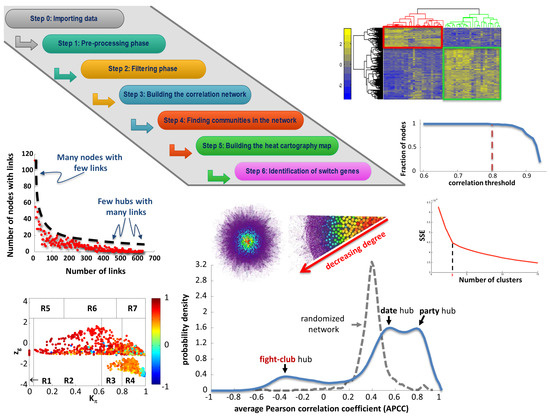
The results showed that the highest number of shared hub genes (e.g., proline dehydrogenase 1 (PRODH), Sam-pointed domain containing Ets transcription factor (SPDEF), monocyte-to-macrophage differentiation associated 2 (MMD2), semaphorin 3E (SEMA3E), solute carrier family 27 member 6 (SLC27A6) and actin gamma 2 (ACTG2)) was seen between the hybrid and the constraint-based algorithms, and these genes could be recommended as central to the GSE33030 data series. The results obtained indicated the tabu search algorithm identified the highest degree between genes (390), Markov blankets (25.64), neighborhood sizes (8.76) and branching factors (4.38). Gene network parameters were estimated using the bnlearn bundle, which is a Bayesian network structure learning toolbox implemented in R. Six different algorithms (grow-shrink, max-min parent children, tabu search, hill-climbing, max-min hill-climbing and restricted maximum) were compared in three higher categories, including constraint-based, score-based and hybrid algorithms. Dataset GSE33030 from the Gene Expression Omnibus (GEO) repository was analyzed using different algorithms for hub gene expression due to the effect of progesterone on bovine endometrial tissue following conception. We used three algorithms to construct Bayesian gene networks around genes expressed in the bovine uterus and compared the efficacies of the algorithms. degree or clustering index).Bayesian gene networks are powerful for modelling causal relationships and incorporating prior knowledge for making inferences about relationships. The plugin also allows the extraction of parts of the network that contain a selected subset of reactions.įinally, to enrich the visual exploration, it is possible to visually render local topological properties of the network (e.g. the organism or perturbation under study), we propose facilities to edit/select putative biochemical transformations. Since the definition of this list is closely related to experimentation (i.e. Inference requires a list of potential biochemical transformations. Here we present a new plugin for Cytoscape dedicated to the inference and visualization of high-resolution metabolomic networks.
#NETWORK ANALYZER CYTOSCAPE SOFTWARE#
There is currently no available software that allows inference and visualization of such high-resolution metabolomic networks directly from raw data. To analyze, explore and interpret these two kinds of relations, powerful visualization tools are required. The combination of these two inference methods generates networks containing hundreds of nodes (metabolites) and hundreds of predicted edges (biochemical reactions and/or high correlations). Moreover, perturbation studies allow the use of correlation analysis to infer/confirm links between metabolites that correlate across various conditions. Such high-resolution data has also been used to predict _ab initio_ biochemical interactions between metabolites. Recently, ultra high-resolution mass spectrometry (FTICR-MS or Orbitrap) has been successfully used in metabolomic studies. Various spectrometric technologies are capable of identifying thousands of metabolites.



Metabolomics aims at the identification and quantification of all metabolites that are present in a cell, tissue or biofluid at a given moment and under particular conditions.


 0 kommentar(er)
0 kommentar(er)
